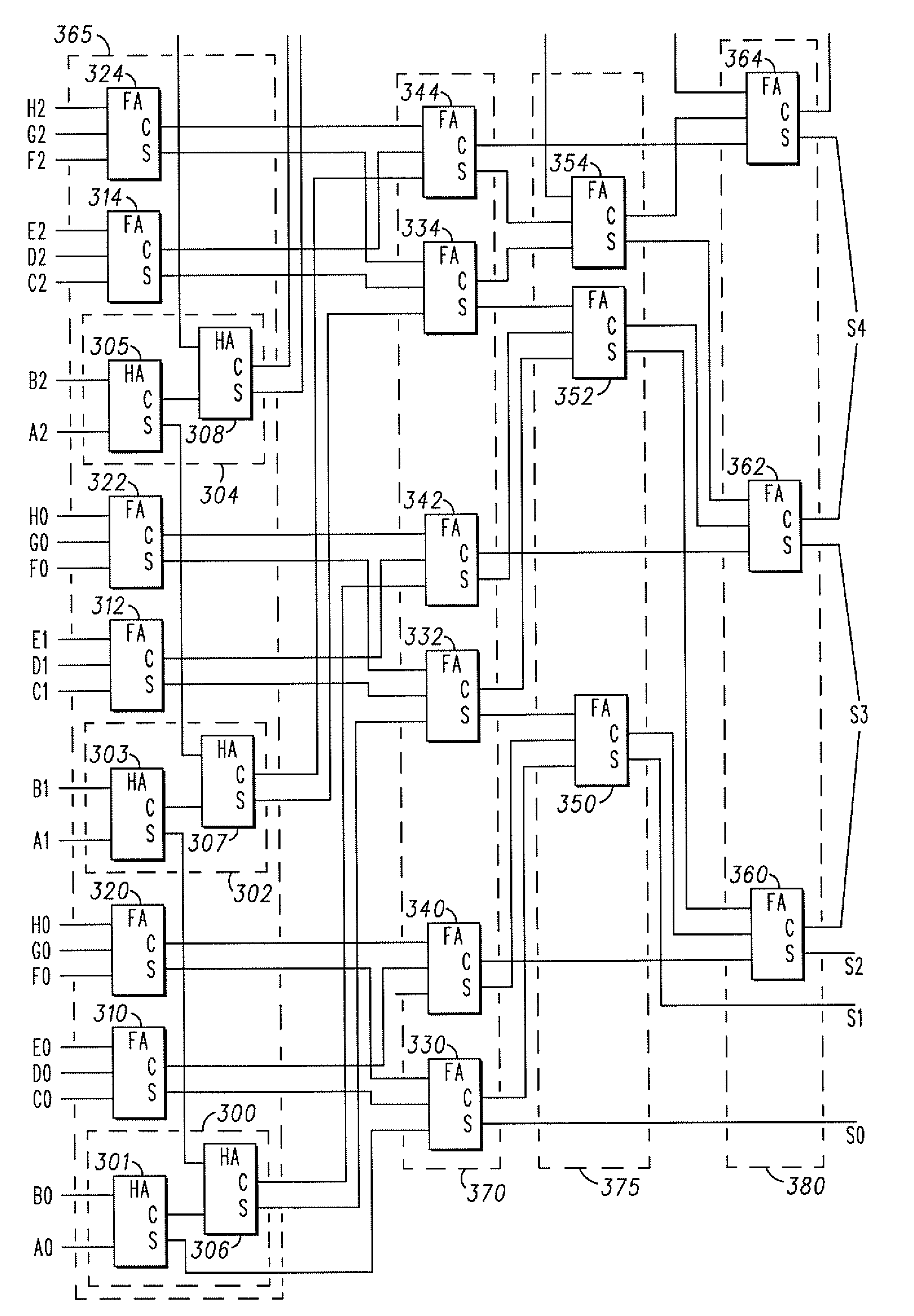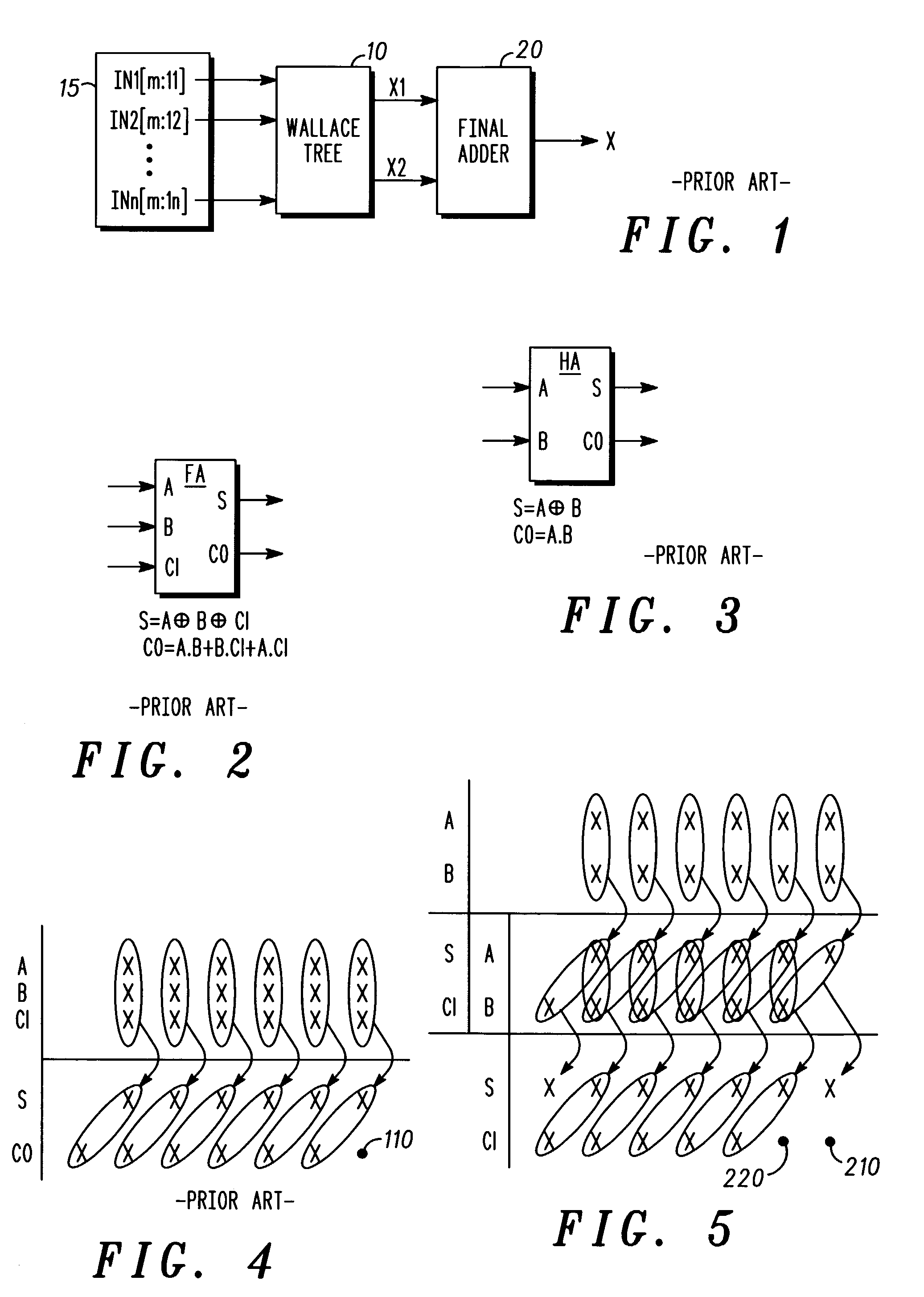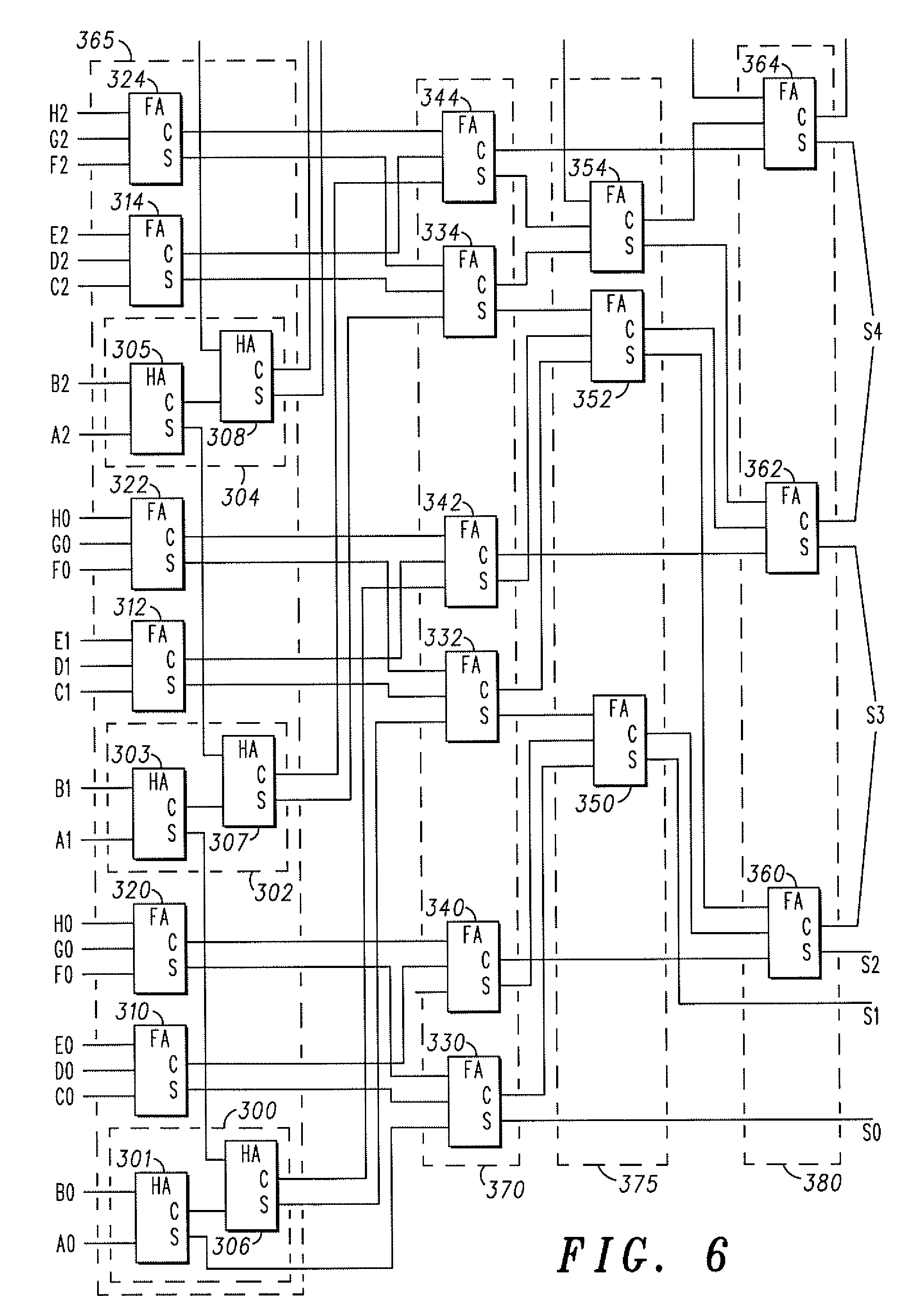Adder tree structure digital signal processor system and method
a digital signal processor and adder tree technology, applied in computing, instruments, computation using denominational number representation, etc., can solve the problems of shortfall in dsp performance and the area of semiconductor material necessary for their implementation
- Summary
- Abstract
- Description
- Claims
- Application Information
AI Technical Summary
Benefits of technology
Problems solved by technology
Method used
Image
Examples
Embodiment Construction
[0024]Referring firstly to FIG. 1, a known vector adder is shown, using a Wallace tree 10 to sum up n number of IN vectors 15 (IN1[m:11] to INn[m:ln]), where m is the number of bits per vector and 1 is the lowest vector index (the least significant bit of the vector) having a non-zero value in each case.
[0025]The Wallace tree 10 comprises a number of stages, each stage composed of Carry-Save Full-or Half-Adders (FA or HA). A FA is shown in FIG. 2, and a HA is shown in FIG. 3. The FA takes three vectors A, B and CI (carry-in), and provides outputs S (Sum) and CO (carry-out). These are calculated as follows:
S=A⊕B⊕CI
CO=A.B+B.CI+A.CI
[0026]The HA takes two vectors A and B, and provides outputs S (Sum) and CO (carry-out). These are calculated as follows:
S=A⊕B
CO=A.B
[0027]The Wallace tree structure reduces the summation process into intermediate stages. In a simple arrangement using only FAs, the ratio of input to output vectors will be 3:2 for each stage, leading to a reduction in the numb...
PUM
 Login to View More
Login to View More Abstract
Description
Claims
Application Information
 Login to View More
Login to View More - R&D
- Intellectual Property
- Life Sciences
- Materials
- Tech Scout
- Unparalleled Data Quality
- Higher Quality Content
- 60% Fewer Hallucinations
Browse by: Latest US Patents, China's latest patents, Technical Efficacy Thesaurus, Application Domain, Technology Topic, Popular Technical Reports.
© 2025 PatSnap. All rights reserved.Legal|Privacy policy|Modern Slavery Act Transparency Statement|Sitemap|About US| Contact US: help@patsnap.com



